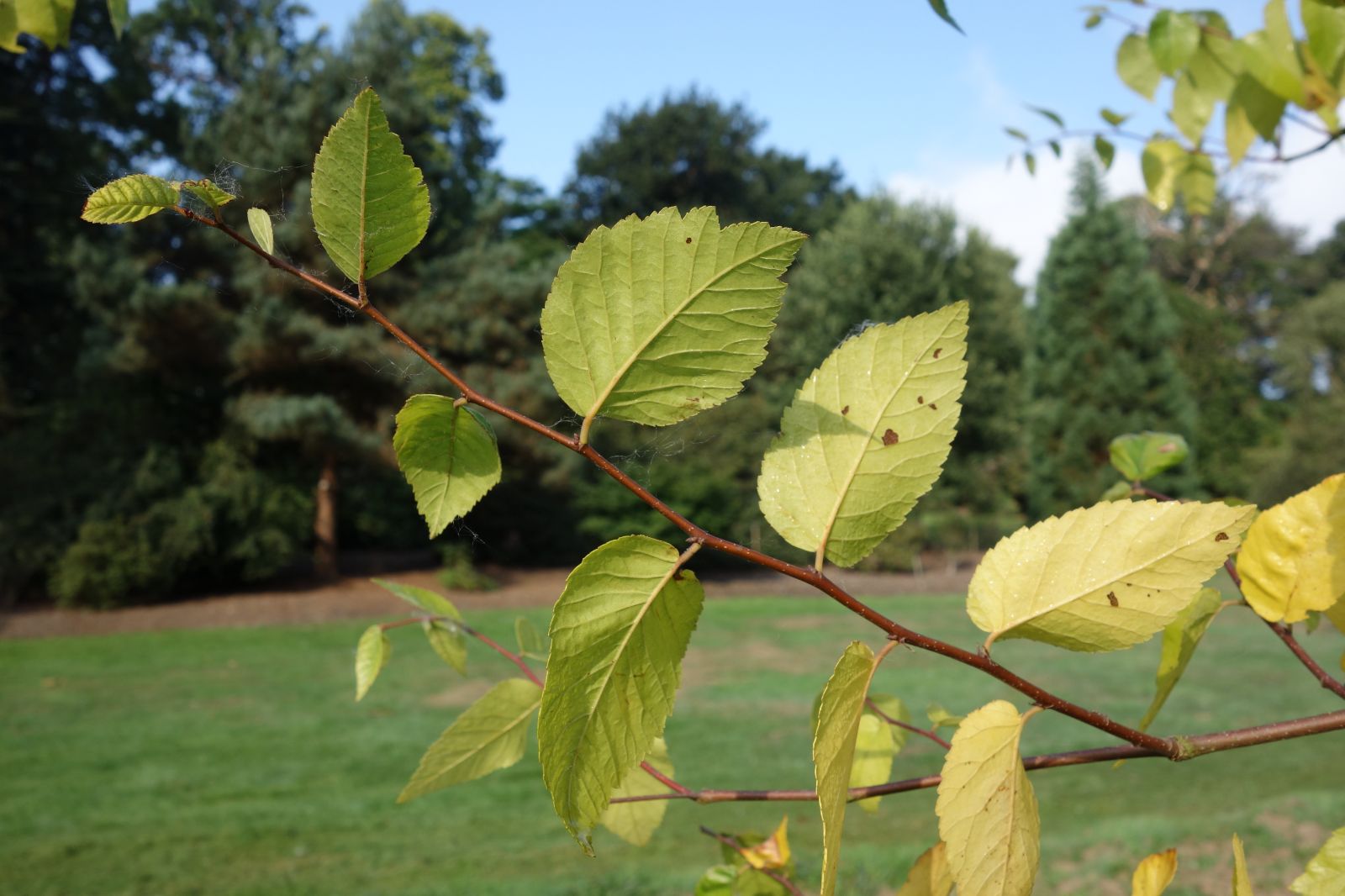Planera aquatica
Credits
Article from Bean's Trees and Shrubs Hardy in the British Isles
Recommended citation
'Planera aquatica' from the website Trees and Shrubs Online (treesandshrubsonline.
Other taxa in genus
A deciduous tree 30 to 45 ft high, with a trunk 15 to 20 in. in diameter; young shoots thin, downy. Leaves alternately arranged in opposite ranks, ovate or oval, 1 to 3 in. long, about half as wide, toothed (sometimes doubly so), scurfy downy beneath when young, ultimately harsh to the touch on both surfaces; veins about ten each side the midrib, forked near the margin; stalk 1⁄8 to 1⁄4 in. long. Flowers greenish, very small and inconspicuous, usually unisexual, sometimes bisexual, both sorts being found on the same tree. Males borne in few-flowered clusters, each one composed of a four-, sometimes five-lobed calyx with a corresponding number of stamens; females longer-stalked, borne one to three together in the leaf-axils of small lateral twigs. Fruits nut-like, 1⁄2 in. in diameter, covered with elongated, wart-like excrescences, and containing one seed.
Native of the south-eastern United States, where it is frequently found in swamps. The tree is extremely rare in cultivation. What was once grown under its name usually proved to be Zelkova carpinifolia. The only known example grows in the Home Park at Windsor, and measures 72 × 81⁄4 ft (1972).



